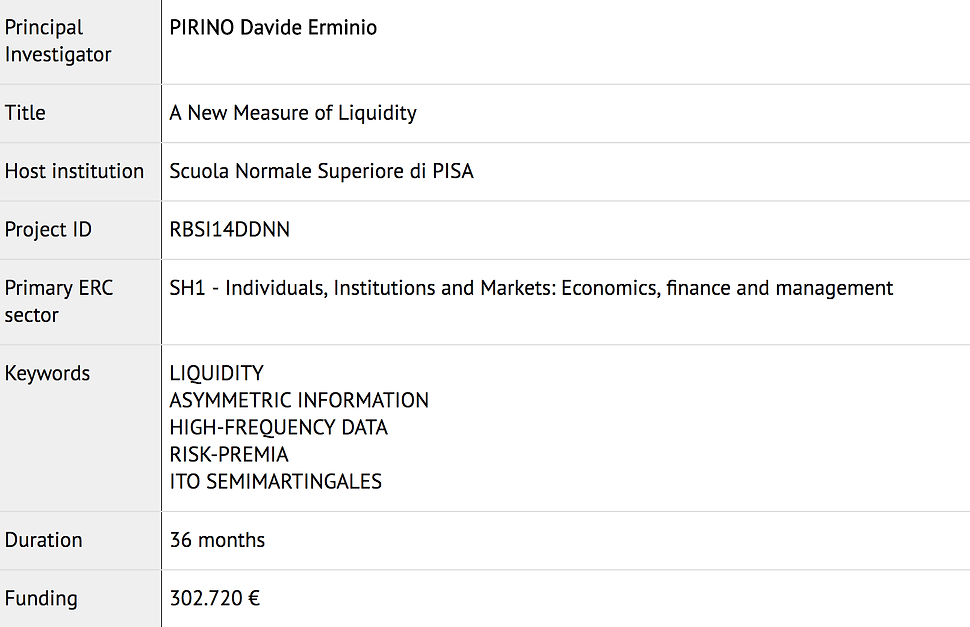
Abstract
The main purpose of this research project is the construction of a new measure of liquidity for financial markets. Why do we focus on liquidity? In financial markets assets are perceived as liquid if they can be easily traded. Put differently, a liquid asset can be sold or bought in the market without large variations of its value. As an immediate consequence assets carry an intrinsic “illiquidity risk”: buy or sell orders may largely impact prices of illiquid assets increasing the risk of operating in the market. Hence, liquidity may largely influence investors' decisions and an accurate measure of liquidity is a fundamental tool for market participants. Further, there is a strong connection between illiquidity and systemic risk. Levered institutions operate in the market continuously rebalancing their positions in order to reach a specific ratio of total assets on total equities (target leverage). As a consequence the riskiness of a specific asset, in terms of systemic effects, is proportional to how frequently it is jointly shared by couples of institutions: a negative shocks that hits the asset will propagate among portfolios of investors that own it. They, in turn, will start to partially liquidate their positions in order to re-establish their target leverage and compensate the value lost. As a consequence, the original shock is propagated across other assets. The higher the illiquidity of assets involved, the deeper the impact of this avalanche effect.
Why a new measure? We want to define a new measure of liquidity because, despite the vast literature on measuring liquidity, a daily realized estimator, based on the intra-day price path, is still missing. Exploiting the information that comes from high-frequency data can be potentially path-breaking to obtain more accurate estimates of the underlying variable.
The idea behind our measure is quite simple: illiquidity frictions operate, by definition, reducing the ease with which an asset is traded, therefore illiquidity in the market can be captured measuring the amount of sluggishness of asset prices. Empirically this can be done by comparing the incidence of small price movements with that expected if prices were perfectly liquid. The presence of illiquidity frictions will result in an inhibition of the trading activity and thus in an increase of small returns. The new stochastic quantity we have in mind is, in essence, the excess of time the log-price process has experienced a variation, in absolute value, below a certain threshold: as the threshold vanishes this excess is expected, for a perfectly liquid asset, to shrink to zero at a computable rate. In the null of a perfectly liquid market, asset prices are modelled as Ito-semimartingales in continuous time. The asymptotic distribution of the variable, which we aim to derive, can thus be used as a test for the presence of illiquidity frictions with a fixed confidence level. We will investigate an alternative hypothesis in which market frictions are distorting the price process from its efficient path. The purpose of this part of the project is to show, by means of a realistic data generating process, that our measure of illiquidity is directly proportional to the extent of important illiquidity frictions, such as transaction costs and asymmetric information. As a natural application of the theory developed in the project, we will check if our measure is able to find an illiquidity premium, both in the short and long run, and if illiquidity is priced cross-sectionally in the market, two big issues of financial economics that are drawing considerable attention in the scientific community. Finally, we will investigate if, on historical data, there is evidence of a causal relation between illiquidity crises and market crashes.